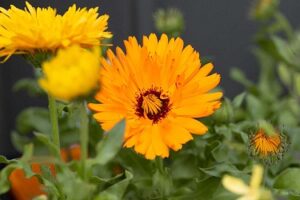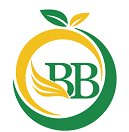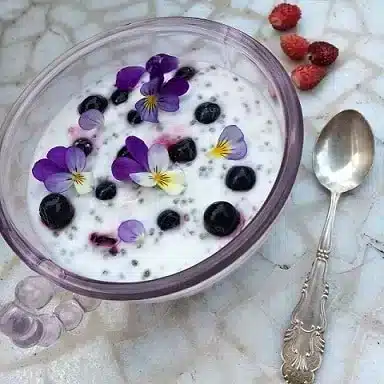Edible flowers aren’t just a feast for the eyes; they can also be a treat for your taste buds and a boon for your health. In this blog post, we’ll journey through the vibrant world of healthy edible flowers, discovering not only their visual appeal but also the nutritional benefits that make them a delightful addition to your diet.
Edible flowers have been used in culinary traditions across the globe for centuries. From salads adorned with pansies to crystallized violets topping desserts, these blooms bring a burst of color and unique flavors to dishes. Popular choices include nasturtiums, calendula, and lavender, each imparting its own distinctive taste.
Edible Flowers Can Be Nutritional Powerhouses:

Beyond their aesthetic value, many edible flowers boast impressive nutritional profiles. Calendula, for instance, is rich in antioxidants, while nasturtiums provide a peppery kick along with vitamins A and C. Incorporating these flowers into your diet not only enhances the visual appeal of your meals but also contributes valuable nutrients.
Culinary Uses and Pairings:
Have fun and explore the myriad ways to incorporate them into your culinary creations. From simple garnishes to more elaborate dishes, these blossoms can elevate both sweet and savory recipes. Try adding hibiscus to your smoothies for a floral twist or infusing lavender into your desserts for a fragrant and unique flavor profile.
Edible flowers offer more than just taste; they can positively impact your well-being. Some flowers, like chamomile, are known for their calming properties, making them an excellent addition to teas or infusions. Others, such as borage, are rich in essential fatty acids that promote skin health.
Caution and Selection Of Edible Flowers:
While exploring the world of , it’s crucial to exercise caution. Not all flowers are safe to eat, and some may cause allergic reactions. It’s essential to source flowers from reputable sources, ensuring they haven’t been treated with pesticides or other chemicals. A guide to safe consumption is essential for those new to incorporating edible flowers into their diet.
DIY Garden:
For those with a green thumb, cultivating an edible flower garden can be a rewarding experience. Not only does it provide a fresh supply of blossoms for your culinary adventures, but it also allows you to control the growing conditions, ensuring a pesticide-free and organic harvest.
The visual appeal of edible flowers extends beyond the plate. Incorporate these blooms into decorative ice cubes, create vibrant floral syrups for cocktails, or simply use them to garnish drinks. The possibilities are as endless as the colors of the petals.
Discover how different cultures around the world integrate flowers into their cuisines. From Middle Eastern rose water to Asian dishes adorned with chrysanthemums, the use of flowers in cooking spans continents and adds a touch of cultural richness to your culinary repertoire.
As you embark on your journey through the world of healthy edible flowers, remember that these blossoms offer more than just visual appeal. They bring a symphony of flavors and a bouquet of nutrients to your table. So, embrace the culinary artistry of edible flowers, and let your meals bloom with both taste and health.

